FIAC Online 2021
Exposition collective
Online
4 - 7th March 2021

297 x 154 cm
Marion Baruch has, for the past ten years, been intervening on fabric offcuts retrieved from the textile industry in Milan. The artist selects, sorts and arrange those materials, so as to transform those disregarded scraps from the industrial and urban society into forms characterised by a flexible geometry. Hung from the ceiling or pinned on the wall, her works reflect a history, as social and political as individual and sensitive.

65 x 97,5 cm
Signed at the bottom left
Prélude de l'élan visible series has been inspired by the artist, after he was marked by the recent accounts of violence and arrests. Massinissa Selmani wanted to translate this use of excessive physical and institutional force. Nevertheless, he does not aim here to describe a specific action or event, but rather a situation in which the violence of authority is played out in the face of its being challenged through various forms of protest (resistance, opinions, the unbolting of statues, etc.). He thus offers a subjective reading of so-called "legitimate" physical violence by focusing more on its structural and unfathomable part rather than its contextual one.
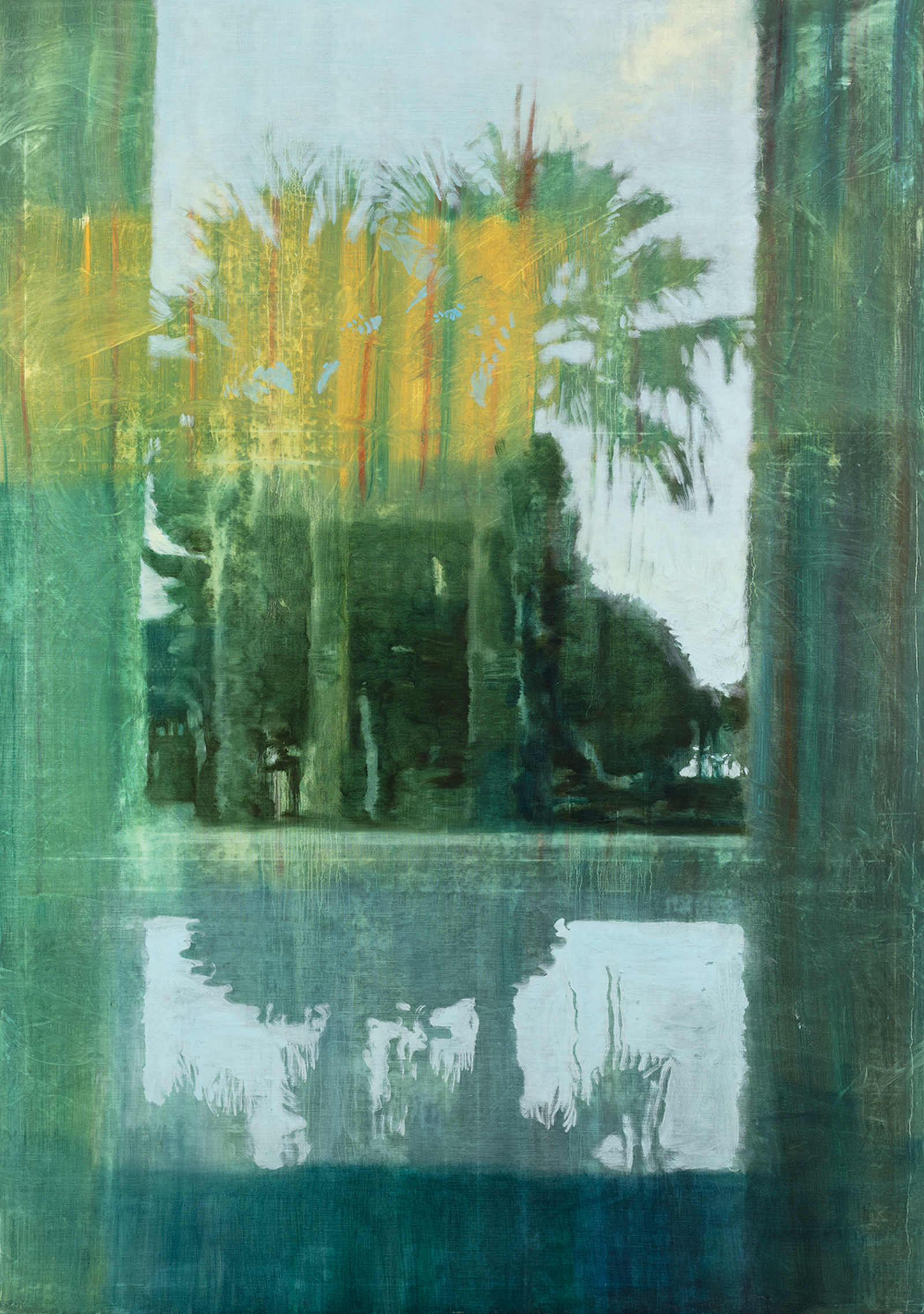
280 x 200 cm
signed, titled, dated on the back
From his memories (images gleaned from the Internet, trips abroad, daily environment...), Yann Lacroix paints deliberately composite landscapes, inhabited by exotic vegetation, tropical greenhouses and swimming pools, made up of their own artificiality and empty of human presence but whose traces of a past or possible history bring sensuality and life: a reflection on heterotopias that is articulated through these places that are both phantasmagoriated and borrowed from the poetry of everyday life like allegories in the painting itself.
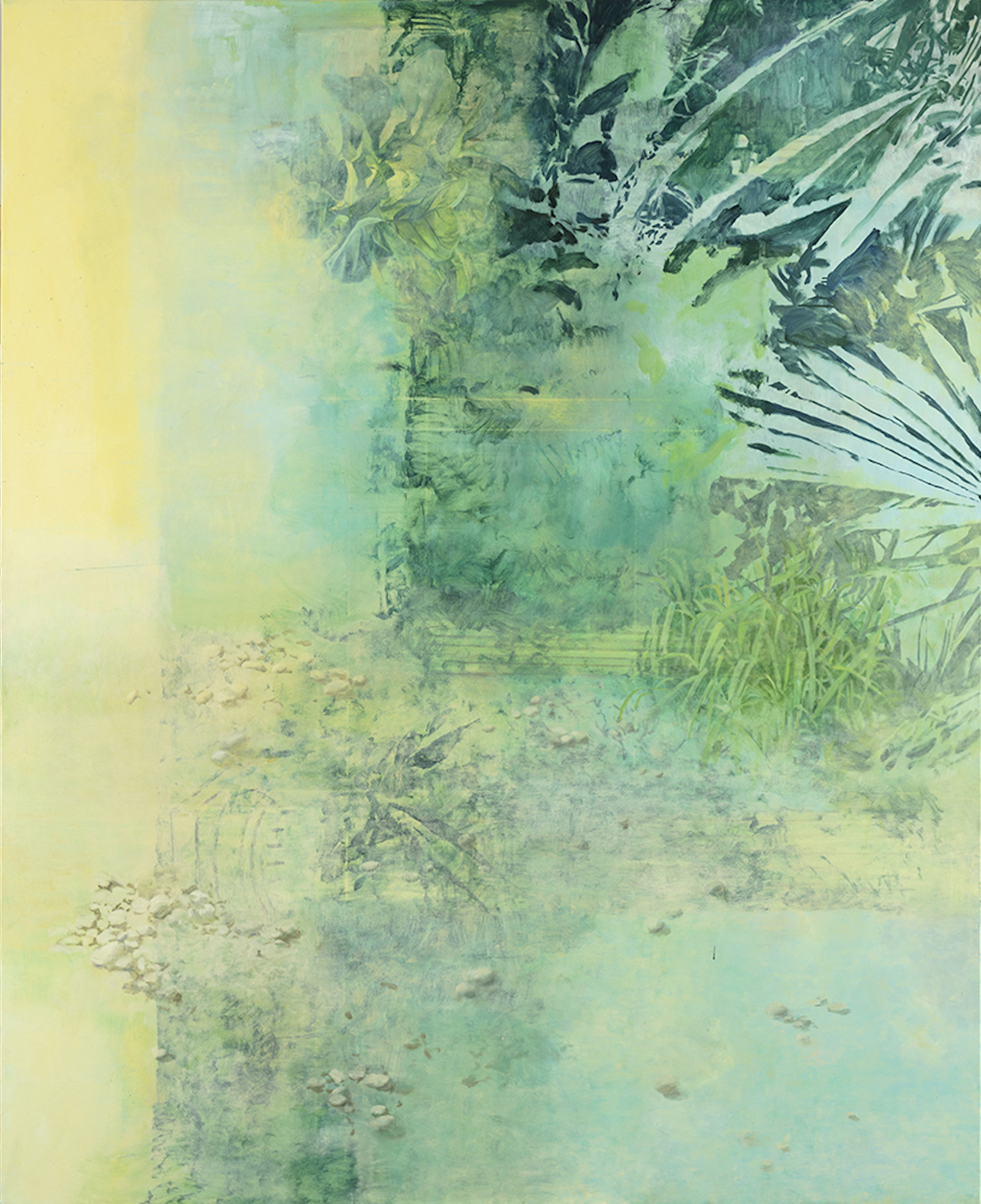
270 x 220 cm
From his memories (images gleaned from the Internet, trips abroad, daily environment...), Yann Lacroix paints deliberately composite landscapes, inhabited by exotic vegetation, tropical greenhouses and swimming pools, made up of their own artificiality and empty of human presence but whose traces of a past or possible history bring sensuality and life: a reflection on heterotopias that is articulated through these places that are both phantasmagoriated and borrowed from the poetry of everyday life like allegories in the painting itself.

Reconstituted stone, pebble
7,8 x 4,7 x 3,9 inch
With these series of sculptures, Julien Discrit develops research where the materials and forms are intimately intertwined. He pursues two reflections very important in his work: one on the minerals, crystals and stones, and another on the spatial, geological and temporal relationship between humankind and its environment. Like future fossils, these sculptures of human hands holding rocks represent an almost archaic gesture of gripping. In a snapshot, they propose a "becoming stone" that plays with both materials - organic and mineral mixed together in yet another piece made of reconstituted stone - but also with artistic and historical practices in the sense of inventing a contemporary aesthetic from an artificial archaeological ruin. It thus reveals the aesthetic forms already given in our environment like these stones which are in themselves finished sculptural forms.
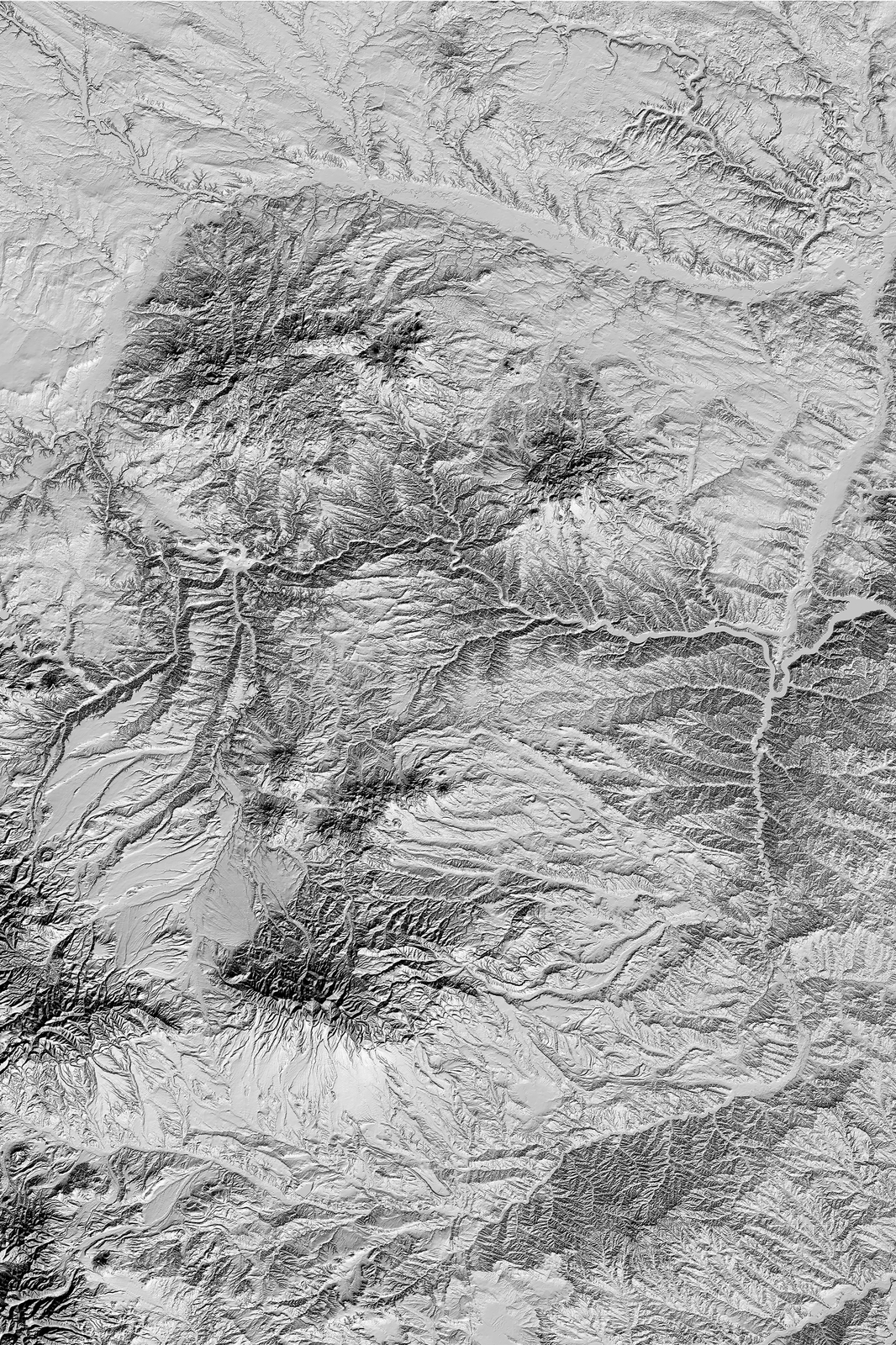
Image: 177,5 x 119 cm
Frame: 188,5 x 130 cm
États-inversés series have been created thanks to elevation data files and show monochromatic landscapes, rivers and mountains from the United States territory. Unless here after changing the light direction and so relief shading, the artist created an inverted landscape. Valleys became crests and mountains became depressions. So instead of offering the classic bird-eye view these maps gives us an exclusive view from underneath.

120 x 90 cm
Titled, dated, signed on the back (upper right)
Petit sweat bleu is part of a group of paintings produced from photographs of sweat-shirts. Very typical of her work, the artist transforms the picture by playing on the scale ratio to provide a different angle. By the inclination of the focal length towards a close perspective and by enlarging the picture, Mireille Blanc subtly fades the subject out of the image, and constructs a filter between the artwork and the one who is looking at it. By blurring the inscription and the image's context, often old-fashion and kitsch, she focuses on the vagueness of the elements treated and plays on the enigmatic nature of subjects she encounters.
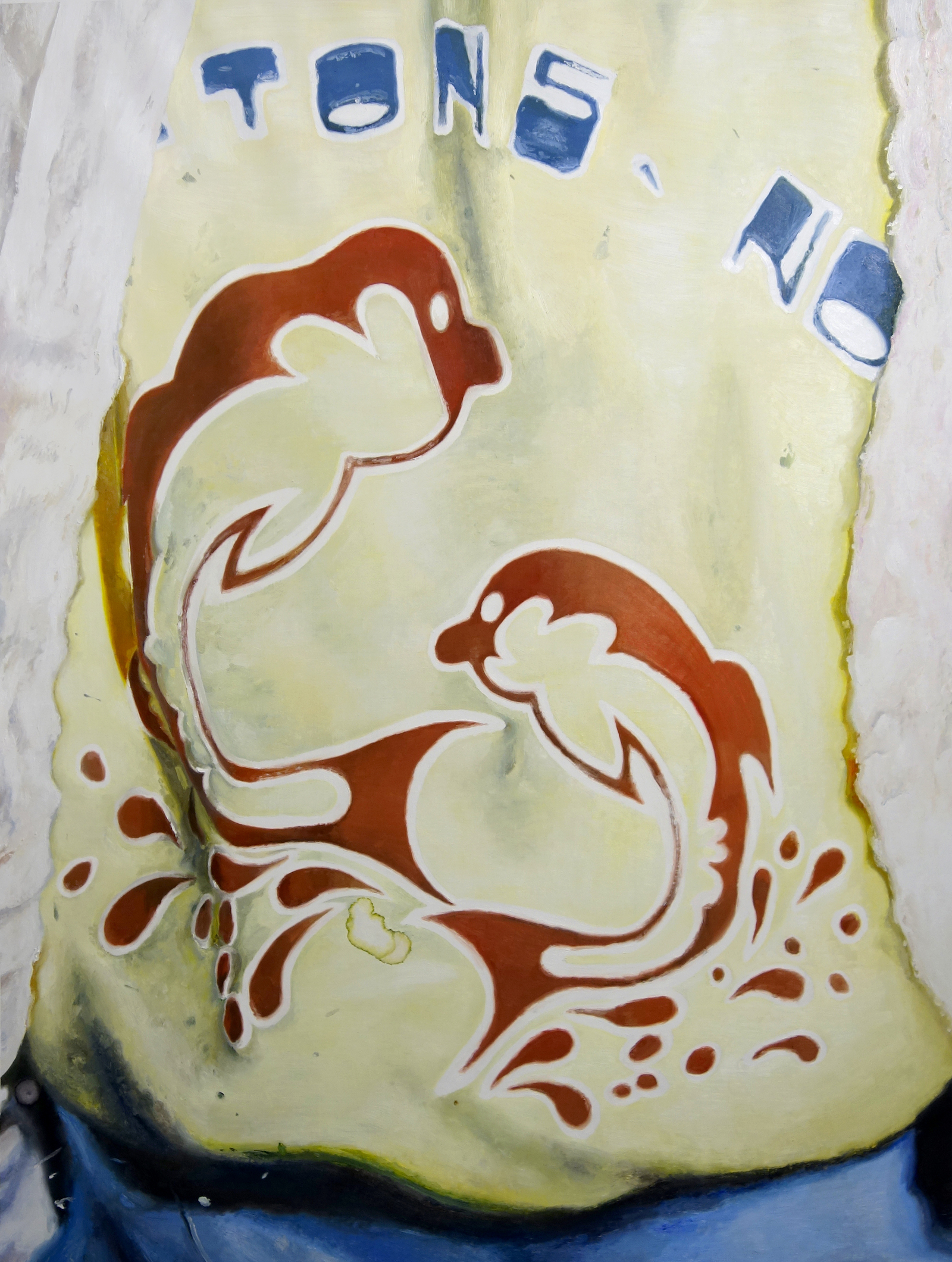
200 x 150 cm
Titled, dated, signed on the back (upper right)
Sweat (Dauphins) is part of a group of paintings produced from photographs of sweat-shirts. Very typical of her work, the artist transforms the picture by playing on the scale ratio to provide a different angle. By the inclination of the focal length towards a close perspective and by enlarging the picture, Mireille Blanc subtly fades the subject out of the image, and constructs a filter between the artwork and the one who is looking at it. By blurring the inscription and the image's context, often old-fashion and kitsch, she focuses on the vagueness of the elements treated and plays on the enigmatic nature of subjects she encounters.

240 x 151 cm
©Alexander Hana
Marion Baruch has, for the past ten years, been intervening on fabric offcuts retrieved from the textile industry in Milan. The artist selects, sorts and arrange those materials, so as to transform those disregarded scraps from the industrial and urban society into forms characterised by a flexible geometry. Hung from the ceiling or pinned on the wall, her works reflect a history, as social and political as individual and sensitive.
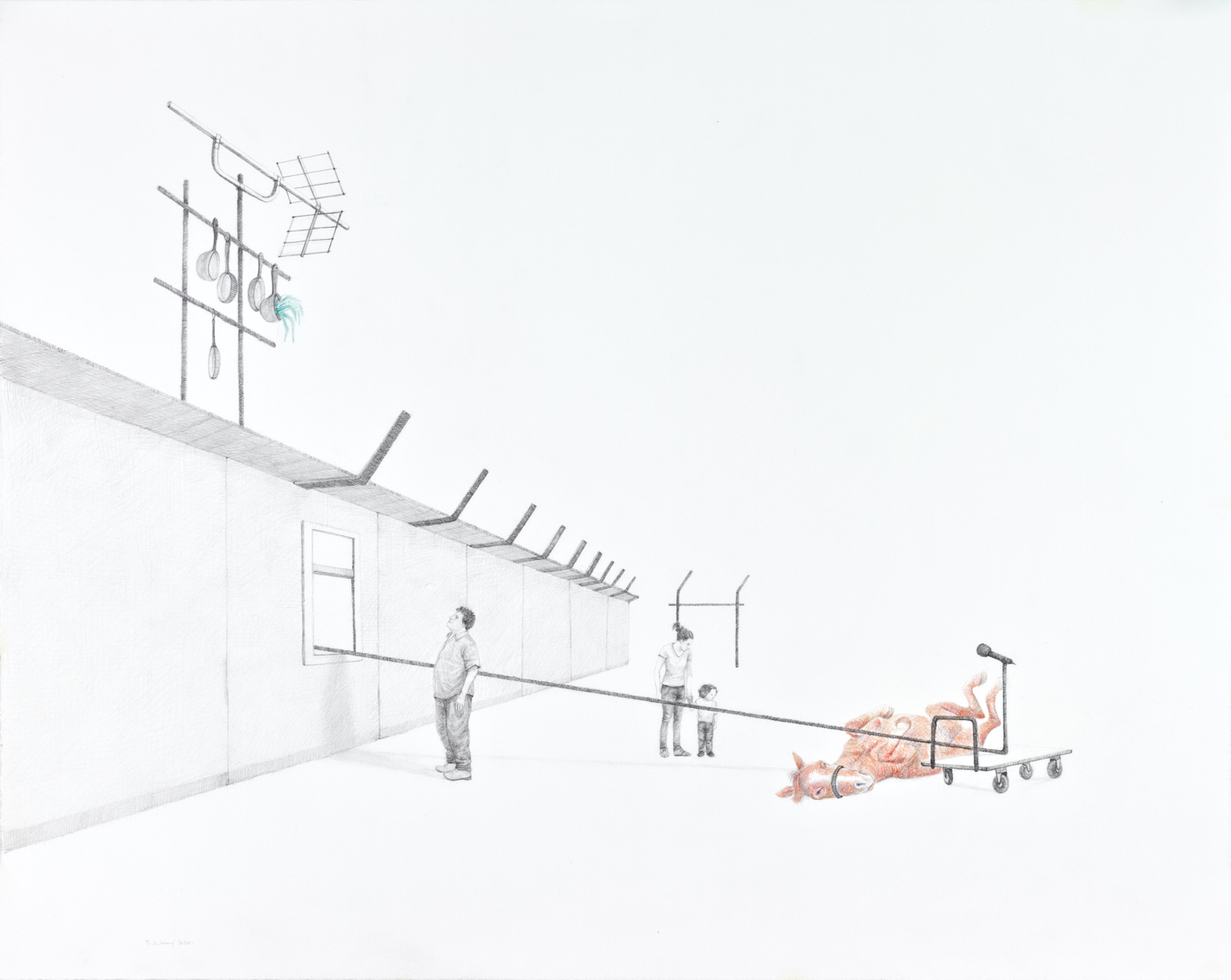
40 x 50 cm
Signed at the bottom left
Prélude de l'élan visible series has been inspired by the artist, after he was marked by the recent accounts of violence and arrests. Massinissa Selmani wanted to translate this use of excessive physical and institutional force. Nevertheless, he does not aim here to describe a specific action or event, but rather a situation in which the violence of authority is played out in the face of its being challenged through various forms of protest (resistance, opinions, the unbolting of statues, etc.). He thus offers a subjective reading of so-called "legitimate" physical violence by focusing more on its structural and unfathomable part rather than its contextual one.